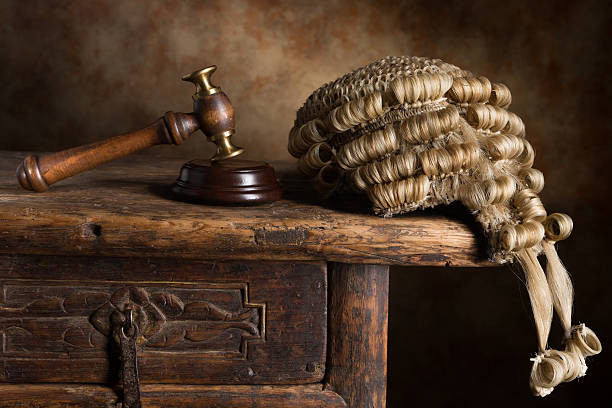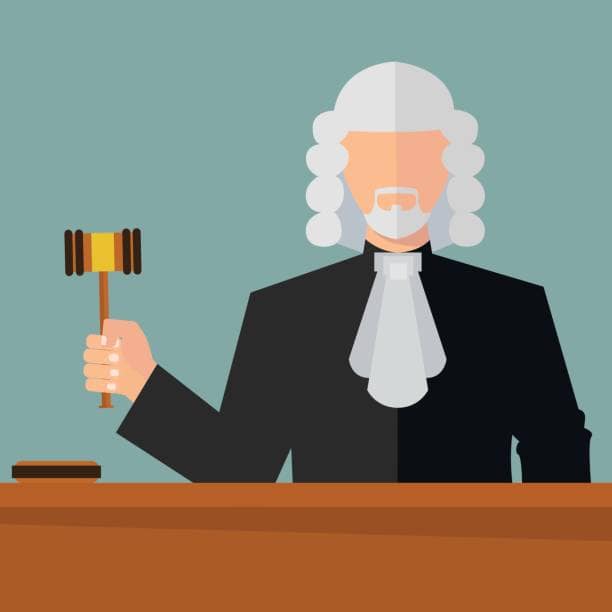You may have noticed judges wearing wigs as part of court dress in crime dramas on television. Why do judges wear wigs? Why do barristers wear wigs? Essentially, the tradition of judges wearing wigs in the dress code can be traced back to the 17th century in England.
In other words, it was part of their traditional court dress or proper court dress. Since the Australian legal system is largely modelled on the UK’s common law system, the question of ‘why do judges wear wigs?’ is relevant in Australia as well.
In the past the rules for district court and lower court judges and barristers may have differed. Note that a judge’s bench wig was not the same as barrister’s wig. Wearing wigs within the courtrooms of NSW may be a familiar practice. This leads to the preservation of many customs and traditions.
In the past, lawyers were expected to appear in court with neatly groomed hair and beards. Wigs found their way into the courtroom simply because they were fashionable attire outside of it. Wigs worn by judges also held significance in polite society.
It took some time for the judiciary to fully embrace this practice, as early portraits from the 1680s depict judges with their natural hair, indicating that wigs were not universally adopted until 1685.
But now increasingly there are arguments suggesting that the wearing of wigs and robes is an outdated tradition in Australia and should be abolished. Moreover, it is worth noting that several countries, such as New Zealand, have done away with the requirement of wearing wigs. Even in Australia, judges and barristers in Australia have stopped wearing wigs as part of their ceremonial dress.
Why Do Judges Wear Wigs? Historical Overview
There are several reasons why judges historically wore wigs, though the specific reasons may vary depending on the country and legal system. Here are some common explanations:
- Symbol of Authority and Impartiality
Wearing a wig was seen as a symbol of the judge’s authority and impartiality. It represented the dignity and gravity of the court proceedings, emphasising the seriousness and formality of the legal process.
- Professionalism and Tradition
Wigs were part of the formal attire for the legal profession, along with robes and other accessories. It also included a black or dark suit. They were considered an important aspect of maintaining the traditions and customs associated with the legal system.
- Standardisation and Equality
Wigs helped to standardise the appearance of judges, ensuring that their personal appearance did not influence the perception of justice. By concealing their natural hair, judges’ individual characteristics were minimised, promoting a sense of equality and objectivity.
- Historical Legacy
Wearing wigs had historical significance, reflecting the customs and practices of the legal profession that developed over centuries. It connected contemporary judges to the legal traditions of the past.
- Hygiene and Practicality
In the past, wigs were also worn to cover up any potential hygiene issues related to head lice or diseases. They provided a practical solution to maintain cleanliness within the courtrooms.
Why Do Judges Wear Wigs in NSW?
The courts no longer actively observe this practice anymore.
You may have found a certain judge in NSW wearing a unique wig and robe when presiding over a case in the past. This served as a visual distinction that set them apart from other individuals both inside and outside the courtroom.
This tradition reinforced the perception of the separation of powers doctrine in Australia, emphasising the distinct roles and authority of the judiciary.
However, there were exceptions to this rule and tradition. For instance, judges in the Supreme Court of NSW sitting on the bails list may not have worn wigs and robes during those proceedings.

Is it Still a Common Practice in Australian Legal Profession?
When reading about why do judges wear wigs, it is necessary to consider if this is still the case in many Commonwealth countries such as Australia. Articles report that the number of wig-wearing judges in courts have greatly decreased.
Nowadays judges in Australia do not typically wear wigs. As we have explored, the tradition of judges wearing wigs is more commonly associated with the legal systems in the United Kingdom and some other Commonwealth countries.
In Australia, judges and magistrates generally do not wear wigs during court proceedings. Instead, they typically wear judicial robes or other appropriate attire that reflects the formal nature of the court setting.
The use of wigs by judges is primarily a cultural and historical practice that varies from one jurisdiction to another. However, it’s important to note that there may be exceptions or specific ceremonial occasions where wigs are worn, but it is not a common practice in Australian courts anymore.
Our Lawyers for Legal Matters
We hope you have found this blog on ‘why do judges wear wigs’ to be useful. To read other blogs, check out our website here. Our lawyers can play a crucial role in helping individuals and organisations navigate various legal issues.
They possess the knowledge, expertise, and understanding of the Australian legal system to provide valuable assistance in a wide range of legal matters.
We can represent you in all levels of court such as high court, and for criminal appeal or criminal trials. Here are some ways in which Australian lawyers can help with legal issues:
- Legal Advice: Our team can provide expert legal advice tailored to individual circumstances. They can assess the situation, explain the applicable laws, and offer guidance on the best course of action.
- Dispute Resolution: We can represent clients in negotiations, mediations, or alternative dispute resolution processes. They aim to achieve fair settlements and resolutions without going to court, saving time and costs.
- Litigation and Court Representation: When legal disputes escalate to court, JB Solicitors can represent clients and present their case before a judge or jury. They handle all aspects of the litigation process, including gathering evidence, preparing legal arguments, and advocating for their clients’ interests.
It’s important to consult with a qualified Australian lawyer who is licensed and experienced in the relevant area of law to obtain the most accurate and effective legal assistance. For more information, contact us today.
